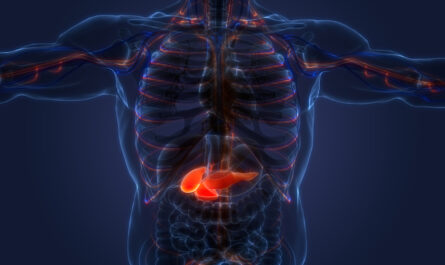COPD is a progressive lung disease that makes it hard to breathe over time due to long-term damage to the lungs. According to the World Health Organization, it is currently the third leading cause of death worldwide. While there is no cure for COPD, several treatment options are available to help manage symptoms, slow progression of lung damage and improve quality of life. Here we discuss the various treatment approaches for COPD.
Medications
Medications play a key role in Chronic Obstructive Pulmonary Disease (COPD) Treatment and can be used for both maintenance therapy as well as relief of acute symptoms. Bronchodilators are the mainstay of therapy and help relax tight muscles in the airways to improve breathing. There are two main types of bronchodilators – short-acting and long-acting. Short-acting bronchodilators like albuterol are commonly used for quick symptom relief as needed. Long-acting bronchodilators like salmeterol and tiotropium provide daily control and are taken regularly to prevent and reduce symptoms.
Corticosteroids are also used as an inhaled preventive treatment to reduce inflammation in the airways. Inhaled corticosteroids (ICS) alone or in combination with long-acting bronchodilators in the form of ICS/LABA inhalers are effective in managing moderate to severe COPD. Oral corticosteroids may sometimes be prescribed short-term during COPD exacerbations to quickly reduce inflammation. Antibiotics and mucolytics are also used respectively to treat infections and thin mucus during exacerbations. Supplements like vitamin D may offer additional benefits. Medication regimen needs to be closely monitored under medical guidance.
Pulmonary Rehabilitation
Pulmonary rehabilitation is a comprehensive, non-drug treatment that involves exercise training and education to teach COPD self-management skills. It has been shown to significantly improve quality of life, exercise capacity and reduce shortness of breath and risk of flare-ups. Pulmonary rehab programs usually involve around 6 weeks of supervised but individualized sessions that include both aerobic and strength exercises combined with breathing techniques and education on nutrition, managing stress and medications. These programs are offered at hospitals and pulmonary/cardiac rehabilitation centers.
Oxygen Therapy
Low levels of oxygen in the blood (hypoxemia) is common in advanced Chronic Obstructive Pulmonary Disease (COPD) . Supplemental oxygen therapy via nasal cannulas, oxygen concentrators or liquid oxygen helps increase oxygen saturation levels and improves exercise capacity and quality of life in those with severe hypoxemia. It needs to be used as prescribed, around 15-24 hours per day typically, under a doctor’s guidance to be effective. Portable oxygen cylinders also help patients be more active and mobile when away from home.
Surgery
Some surgical procedures may help in select cases of severe emphysema, an advanced form of COPD. Lung volume reduction surgery (LVRS) removes diseased portions of the lung to allow healthier areas to function better. It provides benefits in appropriately selected patients. Lung transplantation is an option for those with end-stage lung disease not helped by other treatments. However, both surgeries carry significant risks and are only done as a last resort. Other minimally invasive procedures like bronchoscopic lung volume reduction are also being studied for COPD care.
Bronchitis and Exacerbations Management
Those with COPD are prone to bronchitis flare-ups (respiratory tract infections) and exacerbations (sudden worsening of COPD symptoms). Prompt treatment with antibiotics, oral corticosteroids and bed rest helps reduce recovery time during exacerbations. Getting vaccinated against influenza (flu shot) and pneumococcal pneumonia reduces the risk of respiratory infections. Quitting smoking, avoiding smoke and air pollutants along with regular medical follow-up can help lower exacerbation risk over time. Pulmonary rehabilitation further teaches self-management and early recognition of worsening symptoms.
Integrated Care Approach
COPD care benefits greatly from a comprehensive, coordinated team approach involving specialists like pulmonologists, respiratory therapists, nurses, dieticians and mental health professionals along with primary care doctors. Close monitoring under such integrated care enables early disease detection, optimal medical treatment, self-management support through education and proper lifestyle changes that can slow disease progression and maximize quality of life despite COPD limitations. Palliative care consultation can further guide care involving chronic illness, future planning and end-of-life care. Psychological support may be particularly valuable given the impact of severe lung illness on mental well-being.
In summary, while COPD has no cure, a combination of treatments tailored to the individual including medications, pulmonary rehabilitation, oxygen therapy, vaccinations and lifestyle management can effectively aid breathing, prevent flare-ups, enhance quality of life and ultimately prolong survival for people living with this chronic lung condition. Early diagnosis and an integrated care approach hold promise in optimizing COPD management outcomes well into the future.
*Note:
1. Source: Coherent Market Insights, Public sources, Desk research
2. We have leveraged AI tools to mine information and compile it



